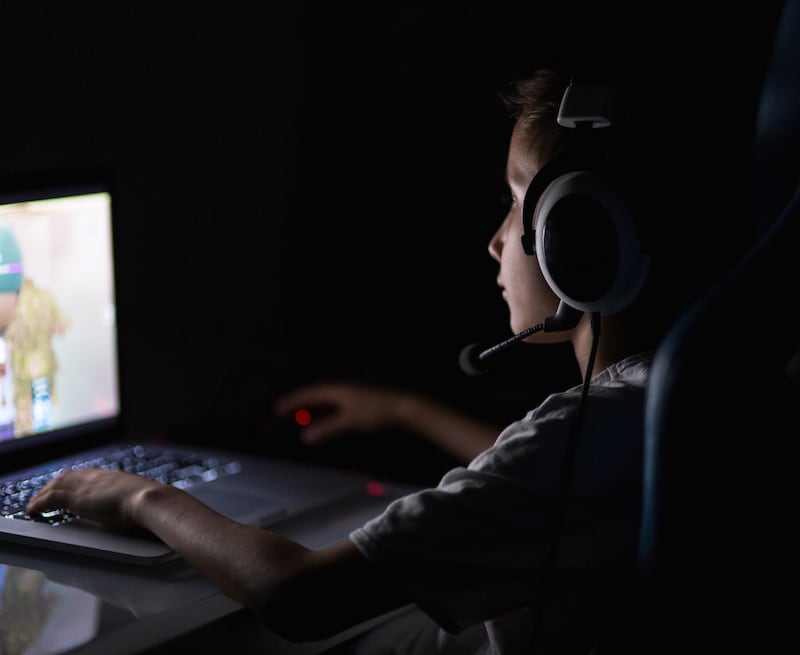‘I wasn’t here,” Séamus barked back when I asked him for the homework due that day.
Not for the first time I wondered if this is how he speaks to his parents. And if he expects to be able to speak to a future boss in this tone when asked for work due by a specific deadline.
Even if we strive to empower today’s adolescents, even perhaps to treat them as equals, there is a hierarchical difference between a student and a teacher and it needs to be reflected in interactions between them.
Artificial intelligence and technological advances threaten lots of aspects of the human labour force. Covid may have dramatically changed education and accelerated progress in many respects, but it has not given rise to anything which suggests that the human teacher is now an endangered species.
We teachers play an invaluable role as daily reminders of the need to maintain brain elasticity as well as digital agility
What we facilitate has less and less to do with learning to learn or to work, and more and more to do with learning to live and interact with others.
Human contact facilitates the growth and learning of young people in ways that simply cannot be replicated digitally or robotically. When young people use their devices to look something up, the very fact that this resource is so readily available conditions them away from memorising.
The whole concept of the search button at one’s fingertips negates the need to remember. We teachers play an invaluable role as daily reminders of the need to maintain brain elasticity as well as digital agility.
As a teacher my word has never been gospel, but students came a lot closer to hanging on every one three decades ago than they do today. From a knowledge perspective, students simply don’t need us as much as they used to. And so we human teachers must work at maintaining our indispensability. The less essential our store of knowledge becomes to the pupils, the more crucial it is to drive the human connection.
Relationships with young people may have changed and evolved dramatically but everyone in Irish classrooms still remain fundamentally human.

E-learning and self-directed learning are already fully viable options, but they are far from the norm in compulsory education. Schools remained closed for months during 2020 and learning content was both captured and delivered digitally in whole new ways. Youngsters are comfortable in the tech and digital worlds. Too comfortable, if the speed at which they reach for their phones is any indication.
Where they are less comfortable is in the area of social behaviour. Some young people challenge me in ways that I know they see as empowered, the way Séamus did when I asked for his work. They forget (or perhaps they have never known!) that there is a level of politeness from which nobody gets an exemption.
For me personally this is not about how young people “speak to adults”, even if for many grown-ups this is still very much a thing. If young people want and expect us to treat them as equals, this involves them ensuring that their brand of empowerment is more that of a fully fledged adult than of an embarrassing wannabe adult.
Many of the most recent examples of this that I have encountered have been in the tone of voice used to address me. Defensive responses delivered in the absence of any trace of attack from me.
Schools are making particular efforts to upload work now to accommodate those forcibly absent due to Covid. Given that we generally upload work for classes rather than individuals there is a reasonable expectation on our part that absence from school (for any reason) does not amount to missing out on work or offer an opportunity to avoid submitting a task.
Nonetheless, “I wasn’t here” remains the mantra, almost without exception delivered in a wary so “why are you even asking me” tone. Exchanges such as these are among the most exhausting things about teaching. What everyone outside the profession fails to realise is that Séamus is only one of the 250 students I teach each week. And that because I teach 11 different class groups across 32 periods weekly I cannot actually hope to remember off the top of my head who exactly was absent when. (And could the robot? I find myself wondering.)
We play a fundamental role in young people's formative years at a time when the technological takeover advances rapidly
And so the real lesson on offer here for Séamus is how to conduct himself in such interactions. It is an invitation to look at the broader context and recognise that perhaps I’m asking in error and need to have that pointed out to me, politely. He may learn to avoid being defensive where there is no need to be, and in this case to recognise that the work has been made available and that my request for it is, in fact, perfectly reasonable.
These lessons will serve him well when he has a paid role and a human boss – an individual with reasonable expectations that their employees have the appropriate social and soft skills to function effectively in a human workplace community.
We too easily reserve the opportunity to learn such things for CSPE, SPHE and, more recently, the overall umbrella of the Wellbeing hours in schools. To compartmentalise in that way is to dangerously underestimate our value as real-life, human teachers. We play a fundamental role in young people’s formative years at a time when the technological takeover advances rapidly. What we teachers do when we are at our best demonstrates the very limits of technology.
And long may that last.
Without us in their lives, what would Séamus and his mates be like when they join the workforce?














